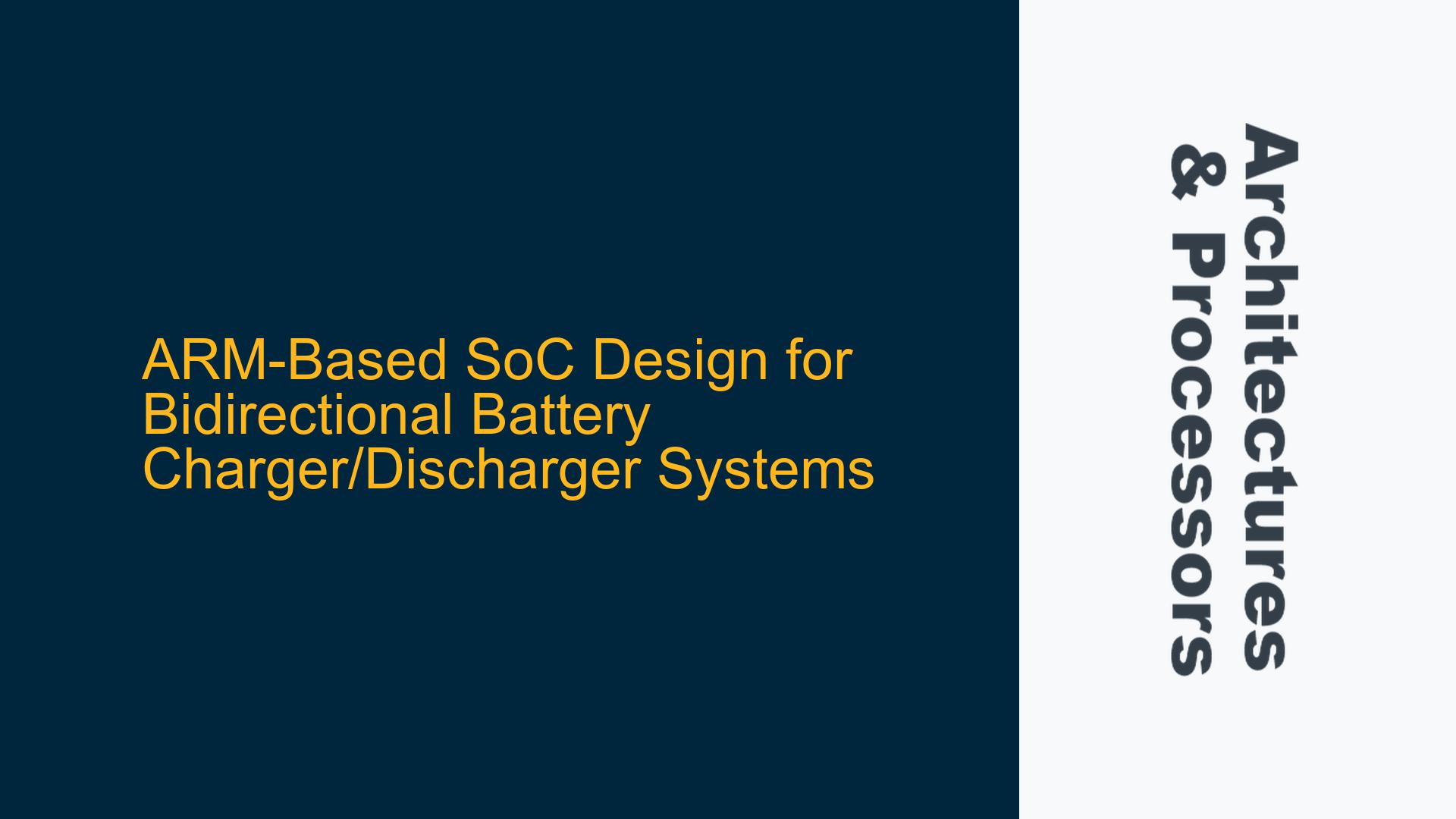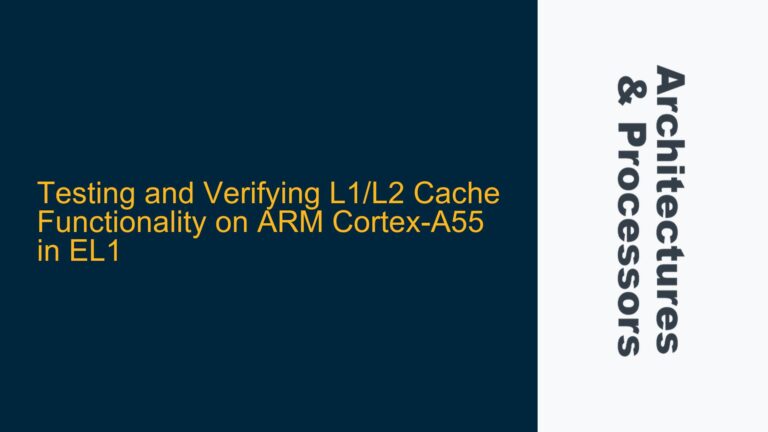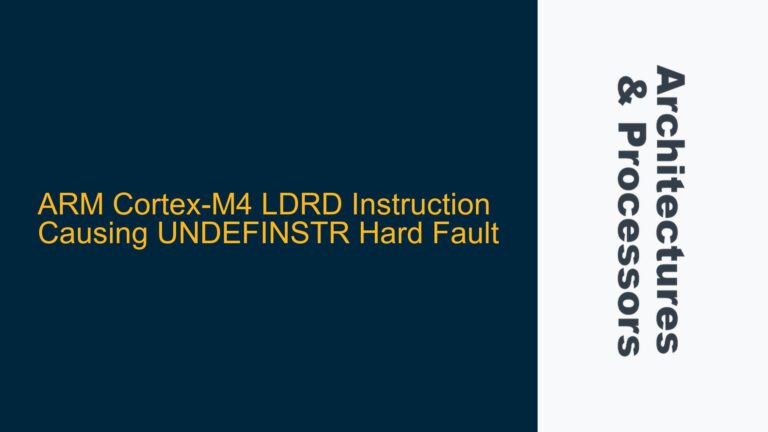ARM Cortex-M4 Integration Challenges in Bidirectional Battery Charger/Discharger Systems
The integration of an ARM Cortex-M4 microcontroller into a bidirectional battery charger/discharger system presents several challenges, particularly when dealing with high-frequency switching, power factor correction, and real-time control loops. The system described involves a 3-phase 380VAC input, a main transformer operating at 20kHz, and a DC output ranging from 50V to 147V with a charging current of 100A. The firmware must handle shunt/temperature sensing, 3V AC to 16-bit ADC conversion, CAN/SPI/SCI communication protocols, power factor correction (PFC), PI/PID control, and PWM for high-frequency switching. The complexity of the system requires a robust SoC design that can handle real-time processing, precise control, and efficient power management.
The ARM Cortex-M4, while powerful, must be carefully integrated to ensure that it can meet the real-time demands of the system. The core challenges include managing the high-frequency PWM signals, ensuring accurate ADC conversions, and maintaining synchronization between the various control loops. Additionally, the system must handle the bidirectional flow of power, which adds another layer of complexity to the control algorithms. The integration of the ARM Cortex-M4 with the power electronics must be done in such a way that the microcontroller can respond quickly to changes in the system, such as fluctuations in the input voltage or load conditions.
Memory Barrier Omission and Cache Invalidation Timing in Real-Time Control Loops
One of the critical issues in integrating the ARM Cortex-M4 into this system is the potential for memory barrier omission and improper cache invalidation timing. The Cortex-M4 relies heavily on its memory system to ensure that data is available when needed, especially in real-time control loops. If memory barriers are not correctly implemented, there is a risk that the processor may access stale data, leading to incorrect control decisions. This is particularly problematic in systems where timing is critical, such as in the generation of PWM signals or the execution of PI/PID control loops.
The cache system in the Cortex-M4 must be carefully managed to ensure that data is not only available but also up-to-date. In a bidirectional battery charger/discharger system, the control loops must respond quickly to changes in the system, such as variations in the input voltage or load conditions. If the cache is not properly invalidated, the processor may use outdated data, leading to incorrect control decisions. This can result in instability in the control loops, leading to poor performance or even failure of the system.
The timing of cache invalidation is also critical. If the cache is invalidated too early, the processor may not have access to the data it needs when it needs it. If the cache is invalidated too late, the processor may use stale data, leading to incorrect control decisions. The timing of cache invalidation must be carefully tuned to ensure that the processor always has access to the most up-to-date data without introducing unnecessary delays.
Implementing Data Synchronization Barriers and Cache Management in ARM Cortex-M4
To address the issues of memory barrier omission and cache invalidation timing, it is essential to implement data synchronization barriers and proper cache management strategies in the ARM Cortex-M4. Data synchronization barriers ensure that the processor does not proceed with subsequent instructions until all previous memory accesses have completed. This is particularly important in real-time control loops, where the timing of data access is critical. By implementing data synchronization barriers, the system can ensure that the processor always has access to the most up-to-date data, reducing the risk of incorrect control decisions.
Cache management is another critical aspect of ensuring the proper functioning of the ARM Cortex-M4 in a bidirectional battery charger/discharger system. The cache must be managed in such a way that it does not introduce unnecessary delays while ensuring that the processor always has access to the most up-to-date data. One approach to cache management is to use a write-through cache policy, where data is written to both the cache and the main memory simultaneously. This ensures that the data in the main memory is always up-to-date, reducing the risk of the processor using stale data.
Another approach to cache management is to use a write-back cache policy, where data is written only to the cache and is written back to the main memory only when the cache line is evicted. This can reduce the number of writes to the main memory, improving performance. However, it also introduces the risk of the processor using stale data if the cache is not properly invalidated. To mitigate this risk, the system must implement a robust cache invalidation strategy, ensuring that the cache is invalidated at the appropriate times.
In addition to data synchronization barriers and cache management, the system must also implement proper interrupt handling to ensure that the ARM Cortex-M4 can respond quickly to changes in the system. Interrupts must be prioritized to ensure that the most critical tasks, such as the generation of PWM signals and the execution of control loops, are handled with the highest priority. The system must also ensure that interrupts are handled in a timely manner, reducing the risk of missed deadlines and ensuring that the system can respond quickly to changes in the input voltage or load conditions.
The implementation of data synchronization barriers, proper cache management, and robust interrupt handling are essential for ensuring the proper functioning of the ARM Cortex-M4 in a bidirectional battery charger/discharger system. By addressing these issues, the system can ensure that the ARM Cortex-M4 can meet the real-time demands of the system, providing accurate and efficient control of the power electronics.
Optimizing Bus Fabric Configurations for Performance in ARM-Based SoCs
The performance of an ARM-based SoC in a bidirectional battery charger/discharger system is heavily dependent on the configuration of the bus fabric. The bus fabric is responsible for connecting the various components of the SoC, including the ARM Cortex-M4, memory, peripherals, and power electronics. The configuration of the bus fabric must be optimized to ensure that data can be transferred quickly and efficiently between these components, reducing the risk of bottlenecks and ensuring that the system can meet its real-time demands.
One of the key considerations in optimizing the bus fabric is the choice of bus protocol. The ARM AMBA (Advanced Microcontroller Bus Architecture) protocol family, which includes AXI, AHB, and APB, provides a range of options for connecting the various components of the SoC. The choice of bus protocol depends on the specific requirements of the system, including the data transfer rate, latency, and power consumption. For example, the AXI protocol is suitable for high-performance systems that require high data transfer rates and low latency, while the APB protocol is more suitable for low-power systems with lower data transfer rates.
The configuration of the bus fabric must also take into account the specific requirements of the bidirectional battery charger/discharger system. For example, the system must ensure that the ARM Cortex-M4 can access the memory and peripherals quickly and efficiently, reducing the risk of delays in the control loops. The bus fabric must also be configured to handle the high-frequency PWM signals and the real-time control loops, ensuring that the system can respond quickly to changes in the input voltage or load conditions.
In addition to the choice of bus protocol, the configuration of the bus fabric must also take into account the specific requirements of the power electronics. The power electronics in a bidirectional battery charger/discharger system require high-speed data transfer to ensure that the control loops can respond quickly to changes in the system. The bus fabric must be configured to handle these high-speed data transfers, reducing the risk of bottlenecks and ensuring that the system can meet its real-time demands.
The optimization of the bus fabric configuration is essential for ensuring the performance of the ARM-based SoC in a bidirectional battery charger/discharger system. By carefully selecting the bus protocol and configuring the bus fabric to meet the specific requirements of the system, the system can ensure that data can be transferred quickly and efficiently between the various components of the SoC, reducing the risk of bottlenecks and ensuring that the system can meet its real-time demands.
Resolving DFT and Power Domain Challenges in ARM-Based SoCs
The integration of an ARM-based SoC into a bidirectional battery charger/discharger system also presents several challenges related to design-for-test (DFT) and power domain management. DFT is essential for ensuring that the SoC can be tested thoroughly during the manufacturing process, reducing the risk of defects and ensuring that the system can meet its performance requirements. Power domain management is critical for ensuring that the system can operate efficiently, reducing power consumption and ensuring that the system can meet its real-time demands.
One of the key challenges in DFT is ensuring that the various components of the SoC can be tested thoroughly. The ARM Cortex-M4, memory, peripherals, and power electronics must all be tested to ensure that they are functioning correctly. The DFT strategy must take into account the specific requirements of the bidirectional battery charger/discharger system, including the high-frequency PWM signals and the real-time control loops. The DFT strategy must also ensure that the system can be tested in a timely manner, reducing the risk of delays in the manufacturing process.
Power domain management is another critical aspect of ensuring the proper functioning of the ARM-based SoC in a bidirectional battery charger/discharger system. The system must ensure that the various components of the SoC are powered efficiently, reducing power consumption and ensuring that the system can meet its real-time demands. The power domain management strategy must take into account the specific requirements of the system, including the high-frequency PWM signals and the real-time control loops. The power domain management strategy must also ensure that the system can respond quickly to changes in the input voltage or load conditions, reducing the risk of instability in the control loops.
The resolution of DFT and power domain challenges is essential for ensuring the proper functioning of the ARM-based SoC in a bidirectional battery charger/discharger system. By implementing a robust DFT strategy and carefully managing the power domains, the system can ensure that the SoC can be tested thoroughly and that the system can operate efficiently, reducing power consumption and ensuring that the system can meet its real-time demands.
Conclusion
The integration of an ARM-based SoC into a bidirectional battery charger/discharger system presents several challenges, including memory barrier omission, cache invalidation timing, bus fabric configuration, and DFT and power domain management. These challenges must be addressed to ensure that the system can meet its real-time demands and operate efficiently. By implementing data synchronization barriers, proper cache management, optimizing the bus fabric configuration, and resolving DFT and power domain challenges, the system can ensure that the ARM-based SoC can meet the demands of the bidirectional battery charger/discharger system, providing accurate and efficient control of the power electronics.






